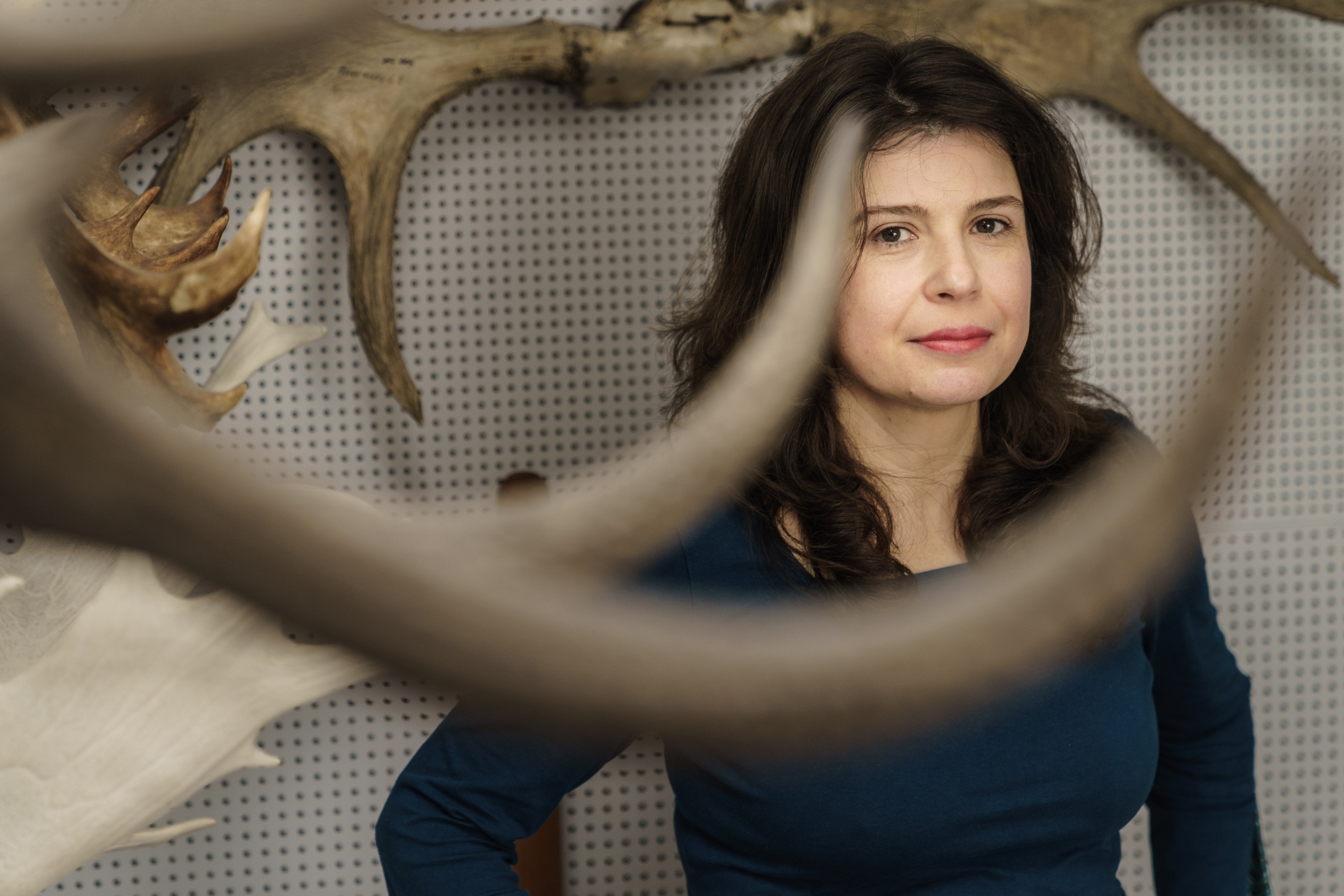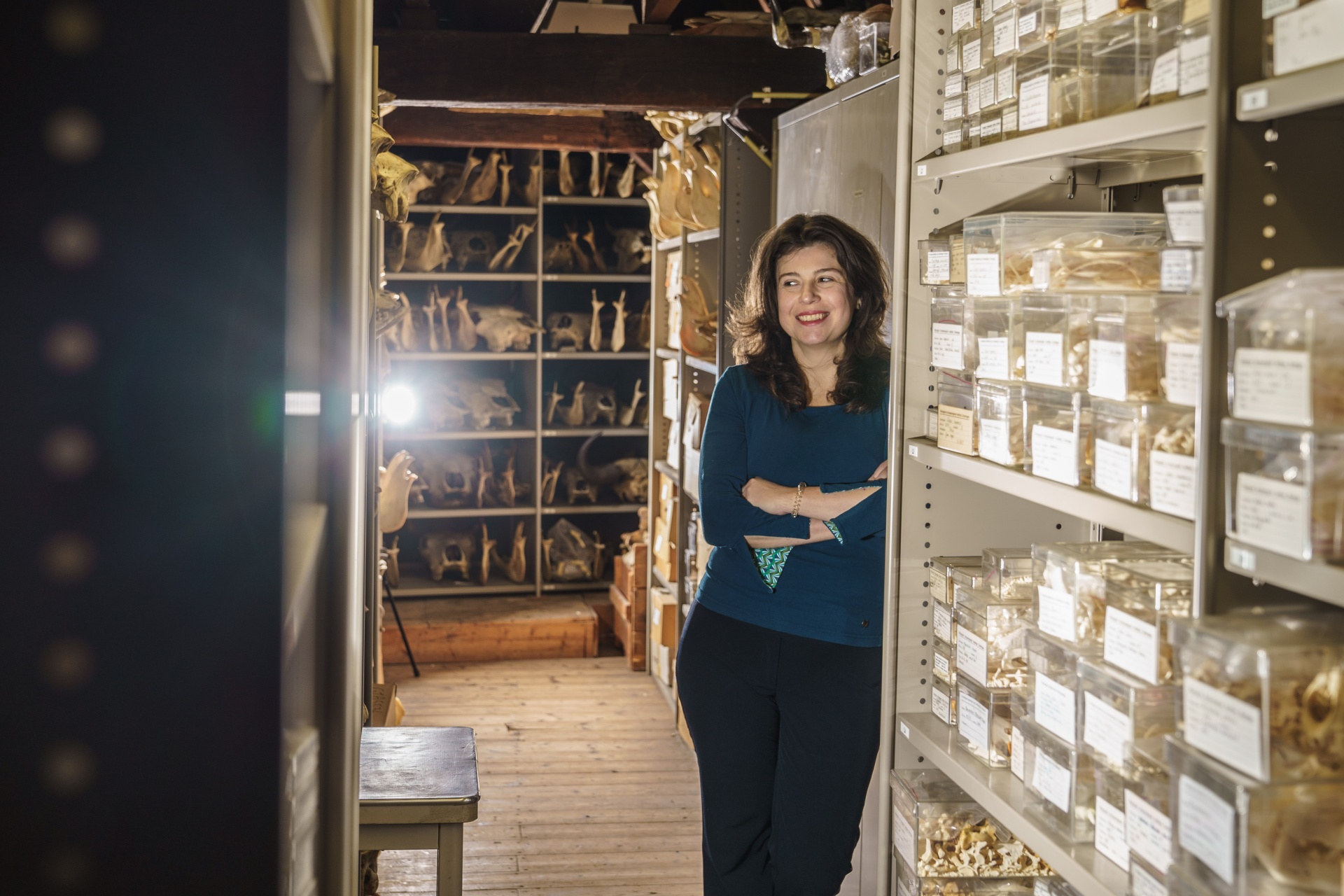Archaeological research provides further insight into rich eco-cultural history of fallow deer
Recently, two scientific publications have been released, both providing further insight into the rich eco-cultural history of the fallow deer, the protagonist of the recent debate on deer parks in the Netherlands. Archaeologist Dr. Canan Çakırlar from the Faculty of Arts at the University of Groningen contributed on both studies. She emphasizes that archaeological and historical research can assist in policy making. "Scientific research paints a detailed picture of what resilient human-animal relationships could look like."
Text: Marjolein te Winkel | Photos: Reyer Boxem

The Dutch Ministry of Agriculture and Nature aimed to put an end to deer parks last year by not including fallow and red deer on the list of domestic and hobby animals. Following criticism from municipalities and the Dutch House of Representatives, demissionary Minister Adema decided to make an exception for the keeping of fallow and red deer, partly due to the longstanding history of deer parks in the Netherlands. The animals will not be included on the domestic and hobby animal list, but they are permitted to be kept, and the deer parks can therefore remain.
Longstanding history
The fallow deer has two subspecies: the now endangered Middle Eastern subspecies, and the European subspecies. The latter is found in various European countries, both in the wild and in large nature parks or somewhat domesticated in deer parks. They are not invasive, at least: one of the studies Çakırlar contributed demonstrates that fallow deer (Dama dama) once inhabited large parts of Europe. This was during a period between two ice ages, more than 80,000 years before modern humans arrived on the continent.
"For a long time, some biologists assumed that fallow deer were an invasive species in Europe," she says. "A few years ago, paleontologists identified fossils near Maastricht in geological layers dating from this period between two ice ages. With our research, we traced where the species sought refuge from the cold during the last ice age: in Bulgaria and the coastal areas of Turkey."
In the hoofprints of fallow deer
Çakırlar has been researching fallow deer for years. She began analyzing data while working as a postdoc at the Smithsonian Institution in Washington DC, and continued collaborating with the international team after joining the Groningen Institute of Archaeology (GIA) at the University of Groningen in 2012. She followed the hoofprints of fallow deer after the last ice age when humans took the species to various places around the world.
"In this research, I demonstrate that deer were widespread in Istanbul and western Turkey 9,000 years ago," says Çakırlar. "They were part of the Neolithic landscape. They became even more common when farmers began clearing forests to create more agricultural land. It is possible that farmers were already managing deer populations, partly to protect crops from grazing deer, but also to keep the deer with them."
The fallow deer migrated with farmers from Turkey to Southern Europe and to the Mediterranean islands such as Rhodes, Crete, and Cyprus. Çakırlar: "Turkey is the main source of deer populations that are now spread worldwide. Romans initially traded their antlers and later entire herds to Western Europe, including Great Britain."

Deer parks in the Netherlands
Archaeological excavations in the Netherlands have yielded surprisingly few remains of fallow deer so far. "The Roman Castellum Valkenburg yielded the oldest fallow deer bone in the Netherlands, but that was an artefact and does not necessarily mean that there was a population here," says Çakırlar.
The first historical mention of fallow deer in Dutch deer parks dates back to 1516. “Those parks were estates of aristocratic families,” says Çakırlar. “The deer were brought from other countries to the Netherlands. For example, Maurits of Nassau brought fallow deer from England to the Hague's Forest."
Neither domesticated nor wild
The research reconstructs how fallow deer lived and what they ate. "Populations of fallow deer varied in size. They were usually larger than those currently in captivity. The populations were loosely managed. They lived in large areas, and their diet was varied due to the wide range of different plants in their habitat."
The fallow deer on estates were neither domesticated nor wild. "Just like the deer in today's deer parks," says Çakırlar. "As a result, they do not really fit into any of the categories we use today to classify animals in biology." Moreover, or perhaps because of this, the species embodied an endless variety of cultural phenomena, she says. "People valued the animals for various - and sometimes conflicting - reasons: for example, because they are wild, or cute, for forest management, their antlers, for their status, or for hunting."
But because the animals do not easily fit into one category, they pose a challenge when it comes to making policies about keeping them - as was evident from the Minister's amended decision.
Archaeological and historical research can assist in policy making. Çakırlar: "Scientific research paints a detailed picture of what resilient human-animal relationships could look like. It tells us a lot about how human-animal societies constantly change both nature and culture, and forces us to think about heritage and history when making conservation decisions, and reintroducing or erasing species because they are biologically suitable or unsuitable."
The two publications are just the beginning of more research into fallow deer. "We want to continue exploring the history of this species and other living cultural heritage, in the Netherlands and beyond."
More information
The articles have been published in the journals Proceedings of the National Academy of Sciences and Nature Scientific Reports.
PNAS: The 10,000-year biocultural history of fallow deer and its implications for conservation policy
Nature Scientific Reports: Ancient and modern DNA tracks temporal and spatial population dynamics in the European fallow deer since the Eemian interglacial
| Last modified: | 02 May 2024 2.36 p.m. |
More news
-
06 May 2024
Impact: Utilization of geospatial data within international development cooperation
One of students nominated for the Ben Feringa Impact Award 2024 is Jonas Göbel. Göbel is nominated because of his internship research around the utilization of geospatial data in the field of international development cooperation.
-
03 May 2024
NWO Impact Explorer for Suzanne Manizza-Roszak's impactful postcolonial literary research
Suzanne Manizza-Roszak, Assistent Professor English at the Faculty of Arts has received an Impact Explorer grant from the Dutch Research Council (NWO) for her postcolonial literary research and the project to translate the results into social...
-
29 April 2024
Learning to communicate in the operating theatre
The aios operates, the surgeon has the role of supervisor. Three cameras record what happens, aiming to unravel the mechanisms of 'workplace learning'.
